Development and Validation of a Prognostic Model for Lung Adenocarcinoma Based on CAF-Related Genes: Unveiling the Role of COX6A1 in Cancer Progression and CAF Infiltration
- PMID: 40331946
- PMCID: PMC12026577
- DOI: 10.3390/ijms26083478
Development and Validation of a Prognostic Model for Lung Adenocarcinoma Based on CAF-Related Genes: Unveiling the Role of COX6A1 in Cancer Progression and CAF Infiltration
Abstract
Lung adenocarcinoma (LUAD), the predominant subtype of non-small cell lung cancer (NSCLC), presents significant challenges in early diagnosis and personalized treatment. Recent research has focused on the role of the tumor microenvironment, particularly tumor-associated fibroblasts (CAFs), in tumor progression. This study systematically analyzed CAF immune infiltration-related genes to construct a prognostic model for LUAD, confirming its predictive value for patient outcomes. The risk score derived from CAF-related genes (CAFRGs) was negatively correlated with immune microenvironment scores and linked to the expression of immune checkpoint genes, indicating that high-risk patients may exhibit immune escape characteristics. Analysis via the TIDE tool revealed that low-risk patients had more active T-cell immune responses. The risk score also correlated with anti-tumor drug sensitivity, particularly to doramapimod. Notably, COX6A1 emerged as a key gene in the model, with its upregulation associated with immune cell infiltration and immune escape. Further in vitro experiments demonstrated that COX6A1 regulates LUAD cell migration, proliferation, and senescence, suggesting its role in tumor immune evasion. Additionally, further co-culture studies of lung cancer cells and fibroblasts revealed that COX6A1 knockdown promotes the expression of CAF-related cytokines, enhancing CAF infiltration. Overall, this study provides a foundation for personalized treatment of LUAD and highlights COX6A1 as a promising therapeutic target within the tumor immune microenvironment, guiding future clinical research.
Keywords: COX6A1; immune microenvironment; lung adenocarcinoma; prognostic model; tumor-associated fibroblasts.
Conflict of interest statement
The authors declare that they have no conflicts of interest.
Figures
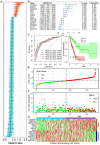

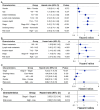

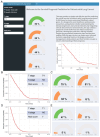

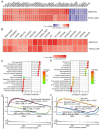


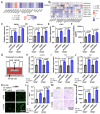
Similar articles
-
A novel cancer-associated fibroblasts risk score model predict survival and immunotherapy in lung adenocarcinoma.Mol Genet Genomics. 2024 Jul 17;299(1):70. doi: 10.1007/s00438-024-02156-z. Mol Genet Genomics. 2024. PMID: 39017768
-
Integrated bioinformatics analysis of nucleotide metabolism based molecular subtyping and biomarkers in lung adenocarcinoma.Front Immunol. 2024 Aug 1;15:1430171. doi: 10.3389/fimmu.2024.1430171. eCollection 2024. Front Immunol. 2024. PMID: 39148731 Free PMC article.
-
Exploring the molecular and immune landscape of cellular senescence in lung adenocarcinoma.Front Immunol. 2024 Aug 29;15:1347770. doi: 10.3389/fimmu.2024.1347770. eCollection 2024. Front Immunol. 2024. PMID: 39267750 Free PMC article.
-
LINC00892 as a Prognostic Biomarker in Lung Adenocarcinoma: Role in Immune Infiltration and EMT Suppression.J Immunol Res. 2025 Apr 22;2025:4341348. doi: 10.1155/jimr/4341348. eCollection 2025. J Immunol Res. 2025. PMID: 40308809 Free PMC article.
-
Cancer Associated Fibroblasts - An Impediment to Effective Anti-Cancer T Cell Immunity.Front Immunol. 2022 Apr 11;13:887380. doi: 10.3389/fimmu.2022.887380. eCollection 2022. Front Immunol. 2022. PMID: 35479076 Free PMC article. Review.
References
MeSH terms
Substances
Grants and funding
- 82373613/National Natural Science Foundation of China
- 82304184/National Natural Science Foundation of China
- 2023M732527/China Postdoctoral Science Foundation
- na/Jiangsu Key Laboratory of Preventive and Translational Medicine for Geriatric Diseases, MOE Key Laboratory of Geriatric Diseases and Immunology
- na/Priority Academic Program Development of Jiangsu Higher Education Institutions (PAPD)
LinkOut - more resources
Full Text Sources
Medical

